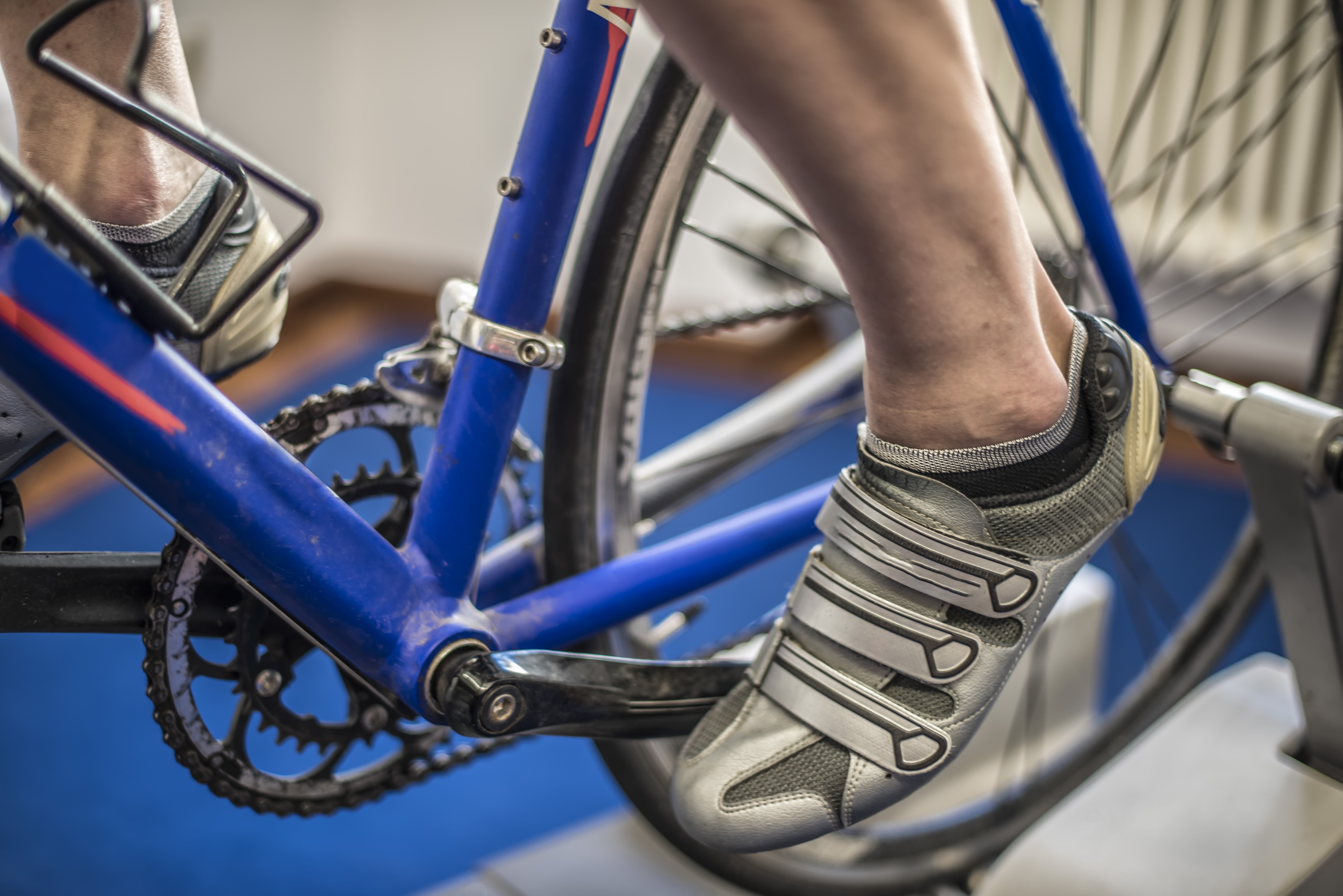Recent Articles
Safety Tips for this Gardening Season Apr 16, 2024
The Role of Stretching and Flexibility Exercises Apr 8, 2024
Hydration and Orthopaedic Wellness: Why Water Matters Mar 25, 2024
Fueling your Body: Using Nutrition to Benefit Musculoskeletal Health Mar 12, 2024
How Orthopaedic Associates's Team Practices Living in Motion Feb 29, 2024
A Better Move for Motion Feb 22, 2024
Orthopedic Issues and Diabetes: Understanding the Connection Dec 13, 2023
Our Recipe for Joint Health Nov 28, 2023
Orthopaedic Associates Begins Partnership with New Rock Ridge High School Oct 2, 2023
Getting You Back in the Game after an ACL Injury Sep 12, 2023
Benefits of Seeing the Orthopaedic Associates Therapy Team
January 9, 2023
When pain due to an injury, surgery, or simply age gets in your way of living life to its fullest, our team at Orthopaedic Associates is here with a fully experienced team and process to get you back to doing what you love.
An integral part of this team are our patient-focused therapists who work alongside our surgeons in order to provide a team approach to your care. This direct access and collaboration develops from day one, so your therapist knows exactly what occurred during surgery and any communication needed can happen between therapists and surgeons. We also have a one-on-one treatment approach, so patients see one physical or occupational therapist from start to finish - not bouncing around to different therapists. This allows YOUR team to get to know your goals and recovery journey.
From a patient’s first session they will meet with their therapist and surgeon to discuss the plan of care and expectations. One of the most important aspects of our team’s job is to get to know who our patients are - what progress you as a patient want to make and what activities you want to get back to. This allows us to create customized treatment plans in order to get you back in motion and enjoying a mobile, independent lifestyle.
Since each patient’s case is so different, the care provided also needs to be unique to you. Therapy can be utilized on its own with non-surgical options and interventions or as part of a total treatment plan that includes surgery. Therapy can also be used to prevent injuries before they even happen. We offer various assessments and evaluations based on the issues you are dealing with in order to see where we are starting from and where we can get you to by the end of your sessions.
Some of our specialties to keep our patients in motion include:
Physical Therapy
Our Physical Therapists have extensive education in the areas of orthopedics, manual therapy, and sports rehabilitation. With the goals of improving strength, function, and mobility, a hand-on approach to recovery is used emphasizing the importance of patient education so that you can follow through with treatments at home.
Our team offers one-on-one sessions, total joint post-op care, and several specific therapy programs including Sportsmetrics ACL prevention and return to sport programs, running assessments and custom running programs, and dry needling. We will talk more about some of these later on in this post.
Occupational Therapy
For patients experiencing trouble performing important daily activities or hobbies, our experienced Occupation Therapy team is here to evaluate and design an individualized program to improve functional abilities.
Since we are often treating hand specific injuries, our staff includes certified hand therapists, specializing in treatments for hands, wrists, elbow, and shoulders. Treatments can include anything from splinting, range of motion, strengthening, manual techniques, and modalities.
Dry Needling
Dry needling is a customized treatment for craniofacial, cervicothoracic, and upper extremity musculoskeletal conditions. It is a form of therapy in which very fine needles are inserted into painful knots in your muscles called myofascial trigger points, tendons, ligaments, or nerves in order to stimulate a healing response.
Pilates Reformer
As part of both our physical and occupational therapy services, we offer use of the Pilates Reformer. A wide variety of exercises can be done on the reformer to help promote and improve stability, strength, flexibility, and posture. One of the best benefits of the reformer is its versatility, allowing us to utilize it with patients suffering from lower or upper extremity pain.
Running Assessments
We offer running assessments which are designed to analyze a runner’s performance in order to create personalized running plans to be used in therapy and help our patients get back to running at full speed. These assessments can also help to prevent injuries in runners, helping them more efficiently and effectively reach their goals.
Sport Focused Specialties
Our Sports Metrics Program works with athletes to prevent injury and reinjury, specifically to the ACL. We also offer Return to Sport Testing where we assess any injury, lower or upper body, to make sure the athlete is safe to return to their sport.
For the convenience of our patients, we offer our therapy services at two of our offices. Our main office in Duluth allows our therapists to work directly with our physicians. While our office in Hermantown provides a spacious fitness gym and offers sport specific programs.
If you believe therapy might be beneficial to you, ask your doctor for a referral or request an appointment at https://www.oaduluth.com/.
Plantar Fasciitis - The Literal Pain in Your Heel
December 1, 2022
You don’t have to live with that pain in your foot! The stabbing pain you feel in your heel when you first get out of bed that seems to work itself out throughout the day - only to come back the next morning or even sooner could be plantar fasciitis. With the right resources, you can kick pain to the curb before you even take your first steps each morning.
First, what is Plantar Fasciitis?
The thick band of connective tissue that runs from the back of your heel into your four toes is called your plantar fascia. This supports the arch of the foot when you land while taking steps throughout the day, ensuring your body has good integrity starting at the heel all the way up to your hip.
Due to increased loads, increase in walking, running, or standing, poor or worn out footwear, or unknown and spontaneous changes in tissues as we age, the facia can get inflamed or develop microtears. This causes pain and is what we know as plantar fasciitis.
Why is plantar fasciitis pain more intense in the morning?
When we sleep at night our foot is typically in a plantar flex (a ballerina point position). When in this position for a prolonged period of time, the fascia becomes tight which can cause pain when being stood on.
After walking or standing on the affected foot, it may loosen up on its own. However, pain can come back after sitting down and standing back up or after prolonged periods of standing. This is why we recommend daily stretches.
How can you decrease your pain?
There are two stretches our physical therapy team suggests doing in the morning to help loosen up your plantar fascia, lessening or eliminating pain throughout the day.
Stretch #1: Before even getting out of bed, take the heel of the hurting foot and rest it on your opposite knee. With your hand, cup the ankle and lock it with your toes flexed toward the knee. Grab your big toe with your other hand and pull backwards towards your trunk. You should feel a stretch along that fascia, hold this for 5 seconds. Repeat this about 20 times for the tissues to loosen.
Stretch #2: Stand next to a wall and place the affected foot against it with your toes running high up the wall, then lean into the wall until you feel a stretch in the heel throughout the arch of the foot and in the calve. Hold this for 30-45 seconds for a nice prolonged stretch.
If it tightens up again throughout the day, repeat these stretches to help loosen up the tissues and decrease irritation or pain.
Can plantar fasciitis cause larger issues?
If something is tight in part of your foot, things often can become affected throughout the upper leg, calf, and into the knee causing greater pain and can hinder your regular daily activities.
What are some additional resources?
If these stretches don’t fix your pain and you are having trouble keeping up with your normal routine, working with a physical therapist on flexibility and strengthening the foot muscles and legs can help get you back to your full range of living. Orthopaedic Associates also offers custom heat molded orthotics which offer a custom fit support in your shoe to promote pain free walking.
In extreme cases where pain is not subsiding, Orthopaedic Associates has two excellent foot surgeons, Dr. Ryan Reinking and Dr. Katherine Schnell, who are both able to provide additional options including injections or surgery.
If you are interested in learning more about plantar fasciitis treatment and hearing from Dr. Katherine Schnell and physical therapist Ann Farley, join us on Thursday, October 27 at 6:00 pm for a discussion. The event will be held at Tortoise and Hare Footware in Duluth. RSVP to Ann at Ann@tortoiseandharefootwear.com or call 218-428-5178.
If you cannot make the event but want to speak to a member of our team about plantar fasciitis, fill out our contact form here or call 218-722-5513 to set up a consultation.
Schedule Appointments When and Where It’s Convenient For You
November 10, 2022
Orthopaedic Associates of Duluth has been setting the standard for orthopaedic care in the Northern Minnesota and Wisconsin region for over 50 years. And now we’re offering a new service designed to change patient access for the better.
Clearwave Scheduling is a patient portal that provides self-scheduling, empowering our patients with the ability to take charge of their own wellness journey. Now you can review provider information and book appointments wherever and whenever it’s convenient for you, 24 hours a day, seven days a week. This service is available at our Duluth, Hibbing and Virginia (VRMC) locations.
This new service makes Orthopaedic Associates of Duluth the only orthopaedic practice that provides clients with 24/7 access to appointment scheduling. This service is open to any and all — no referral is needed to schedule an appointment and you don't need to be an existing patient.
Self-scheduling on your terms and on your time. It’s just the latest way we’re leading the region in orthopaedic care.
Schedule now at oaduluth.com
Orthopaedic Associates Bike Fit Evaluation Program
October 5, 2022
It’s the best time of year for bikers. However, in order to get the maximum benefits from your warm-weather rides, you need to ensure a proper fit with your bike. Not only will a proper bike fit provide better comfort and offer you more endurance, it will also mitigate repetitive stress injuries as well as the risk of neck, wrist, back and knee pain.
That’s why all of us at Orthopaedic Associates are excited to offer a new, exciting program designed to help bikers reap the benefits of a proper bike fit.
Bike Fit Evaluation Program
Orthopaedic Associates' new program provides the expertise of a physical therapist and trained professional bike fitter to keep you and your bike in motion all summer.
Ann Farley—PT, DPT, CSCS, and Serotta Certified Level II Professional bike fitter—will complete a thorough examination of your flexibility, strength, and alignment both on and off of your bike. That includes an evidenced-based examination of cleat positioning and shoe size, joint angles, and mechanical positioning of the saddle, handlebars, and rider.
This examination and evaluation will provide each biker with a custom bike fit designed to help them meet their cycling goals.
Who Should Get a Bike Fit?
This program offers benefits to bikers of all ages and fitness levels, and works with all models of bicycles.
Whether you are a recreational rider, triathlete, or serious competitive rider, your bike must fit you to achieve optimal comfort, performance, and to promote long term practice of the sport you love. So the short answer is: everyone should get a bike fit.
How Does It Work?
We offer three separate tiers in our Bike Fit Evaluation Program. All evaluations are completed out of our Hermantown location. Bikers should bring their bike, bike shorts, socks and their cycling shoes with them.
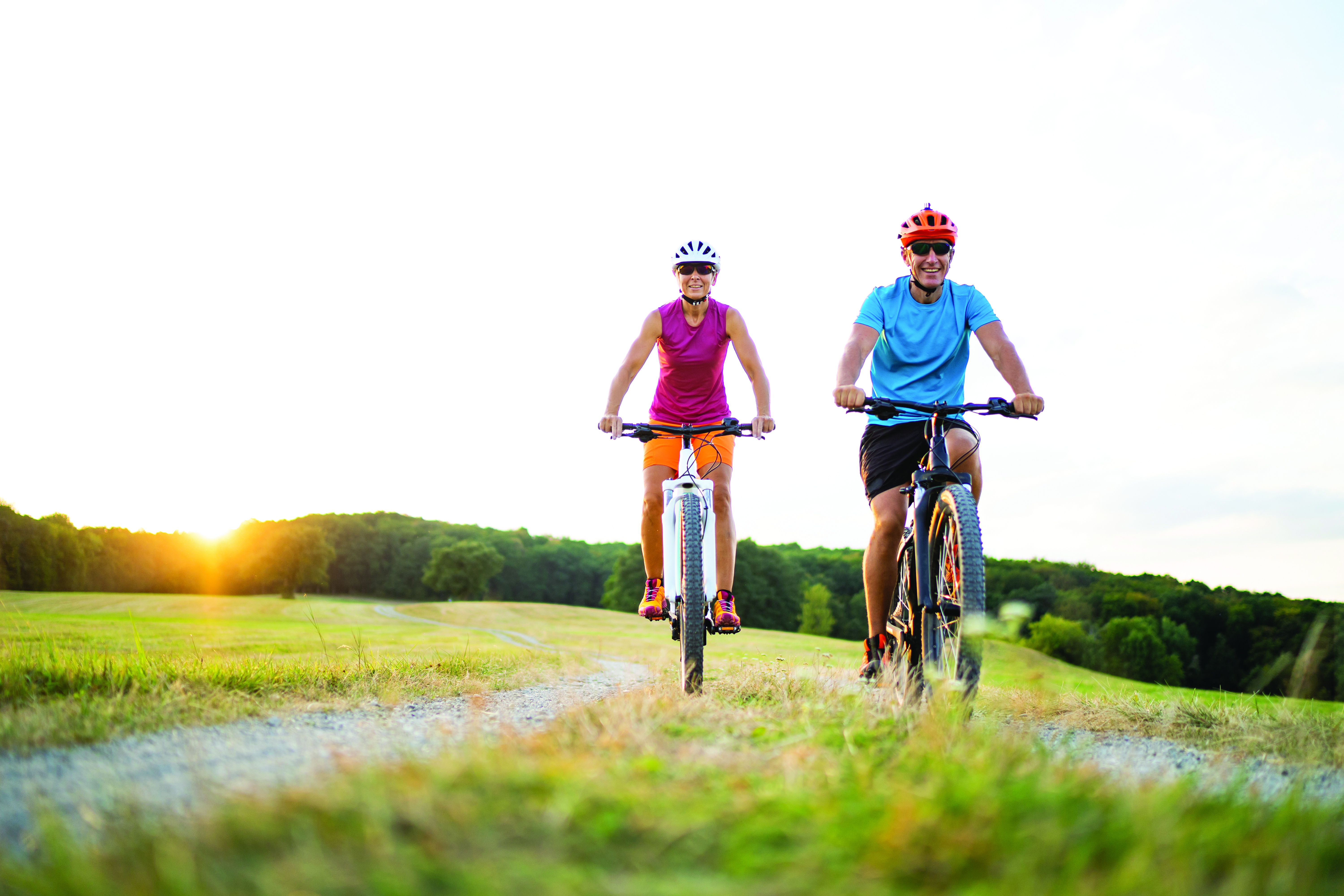
Tier 1 — Biker Evaluation
- Off-bike physical therapy evaluation
- Initial cleat evaluation to determine appropriate cleat size, and asses calcaneal positioning
- On-bike evaluation of cycling mechanics utilizing slow-motion video capture
- Home program recommendations based on evaluation, including recommendations to improve cycling biomechanics
- Recommendation to a Tier 2 evaluation if appropriate or necessary.
Tier 1 is billed through insurance, depending on your carrier and plan.
Tier 2 — Mechanical Bike Fit Evaluation and Adjustment
- Saddle fore and aft adjustments
- Saddle height adjustments
- Saddle width assessment
- Frame stack and reach measurements
- Saddle x-y measurements
- Pelvic positioning
- Pedal stroke path assessment
- Stem length, angle, height and handlebar width and angle modification and assessment
- Cycling shoe shimming and wedging for improved positioning, power, and peddle path
- Orthotic Recommendations
- Before and after video analysis of riding position
- Parts referral if appropriate or necessary
Tier 2 is cash pay -- 1.5 hours for $150
Tier 3 — Optional Follow-up
- Final fit adjustments following two weeks of riding.
Tier 3 is cash pay -- 45 minutes for $75
**Please ensure that your bike is clean, and in mechanically working order prior to your fit.
Call 218-336-7676 to schedule your bike fit evaluation today!
Here to Provide a Better Move for Motion
September 1, 2022
Here to Provide a Better Move for Motion
Here at Orthopaedic Associates, we understand that the health and safety of those you love and care about most is always at the heart of your decision making. Our team also wholly values a family focused mindset, and not only want patients to take our word for it, but we also want every patient to see and feel us put this value into action - building confidence that you are in the best hands. Because your family needs the best in order to continue doing what they love.
Due to this, we are taking steps every day to ensure we are a better move for motion - for you, for your spouse, for your children, for your parents, and for everyone else you love. Here are just a few ways we are proud to continually exceed your expectations, helping you to live in motion:
Prompt Scheduling
When someone you care about is in pain, even a timely response back from your care team can feel like an eternity. Communication is one of our top priorities, making sure you hear back from a member of our team with a scheduled appointment within 24 hours. This allows the journey to recovery to start faster. We will also be providing 24/7 self scheduling soon! Stay tuned for more updates on that.
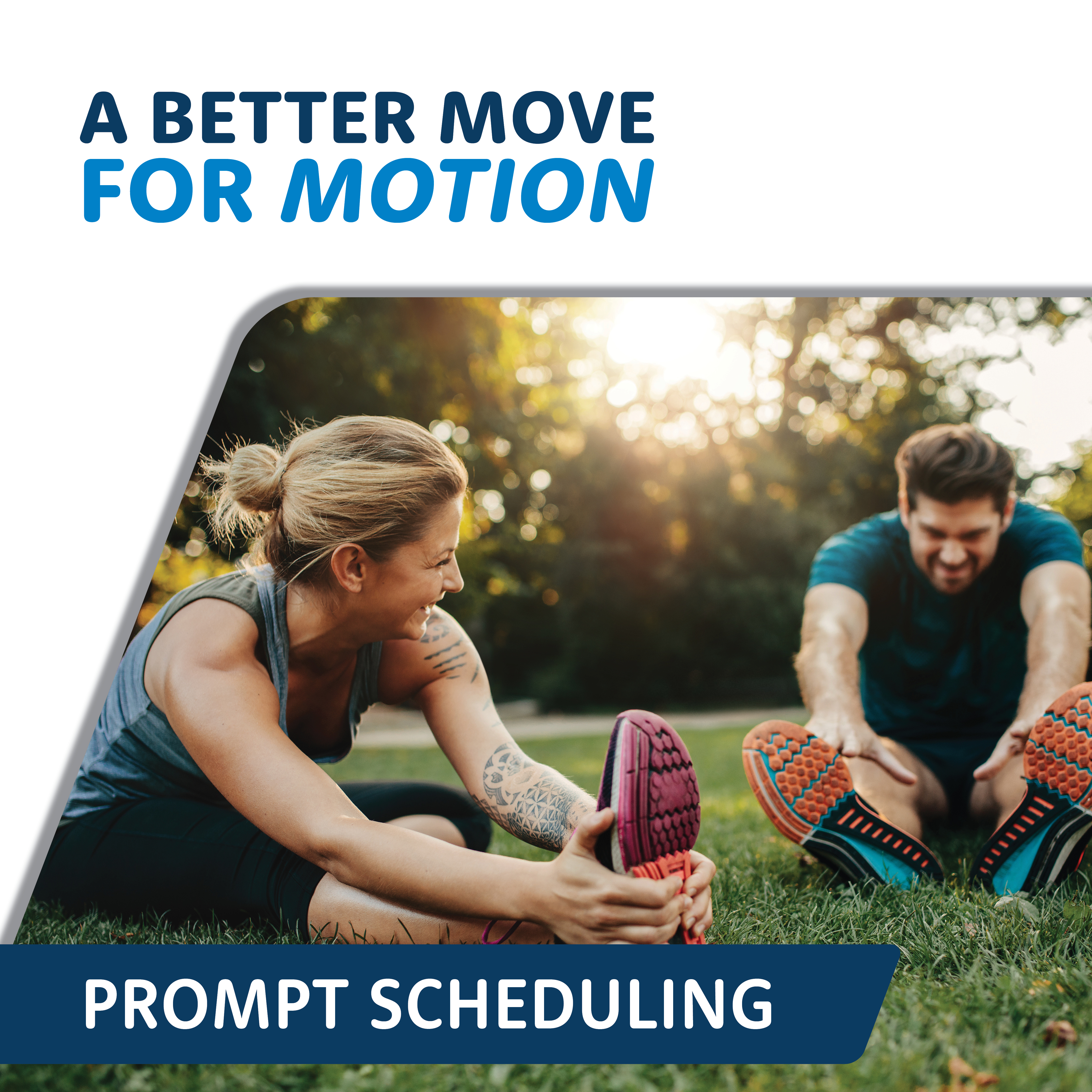
Surgeon Care from the very Start
We believe that better care starts with the best. That is why patients at Orthopaedic Associates receive expert care as soon as they walk through our doors, being able to see a surgeon from their very first visit. From there we decide the best course of action - in order to get you and your family back to doing what you love.
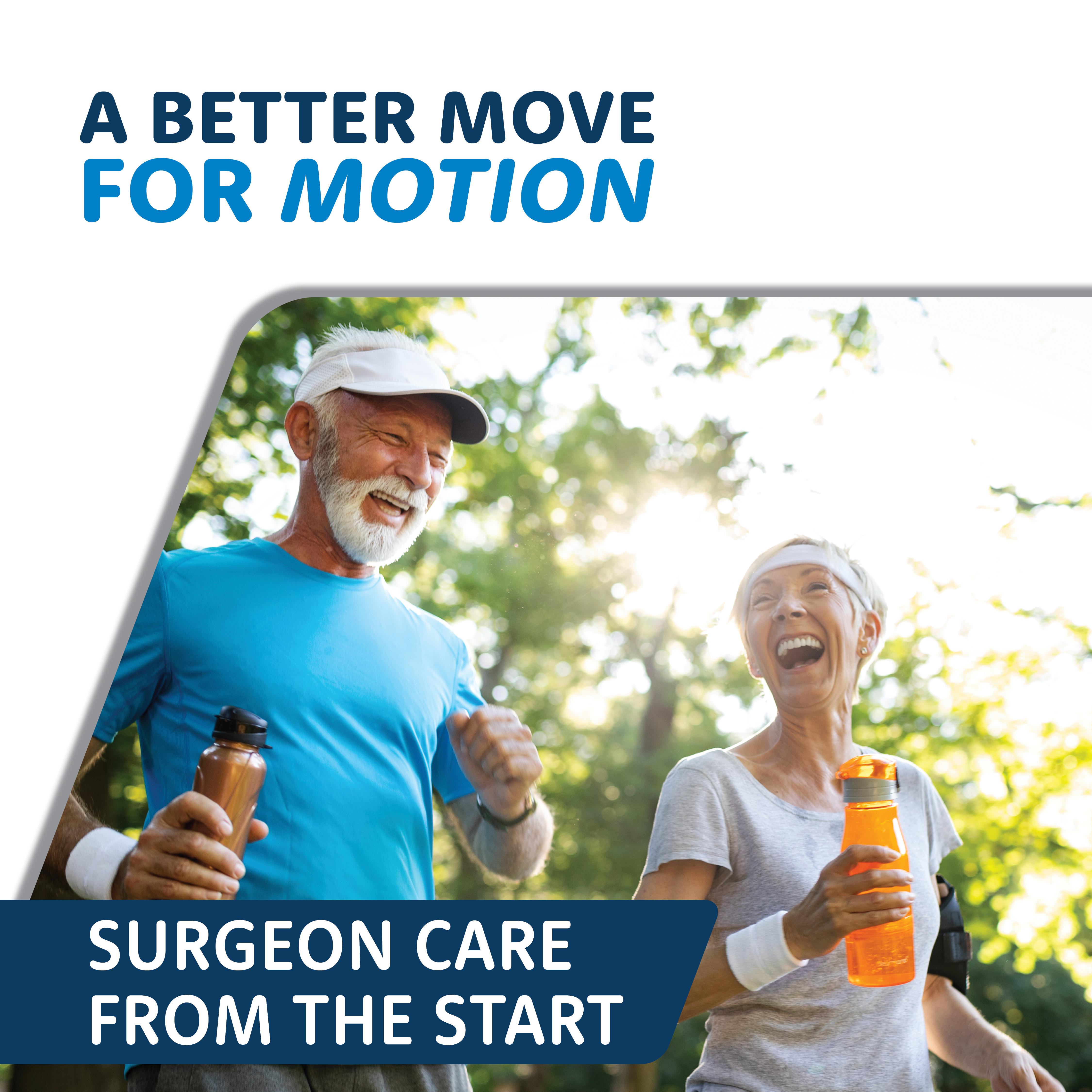
No Referral Necessary
The road to recovery should be easy to begin, which is why no referral is needed for an appointment with one of our surgeons. Simply fill out our contact form located at https://www.oaduluth.com/contact.php, or call the office at (218) 722-5513 to set up an appointment!
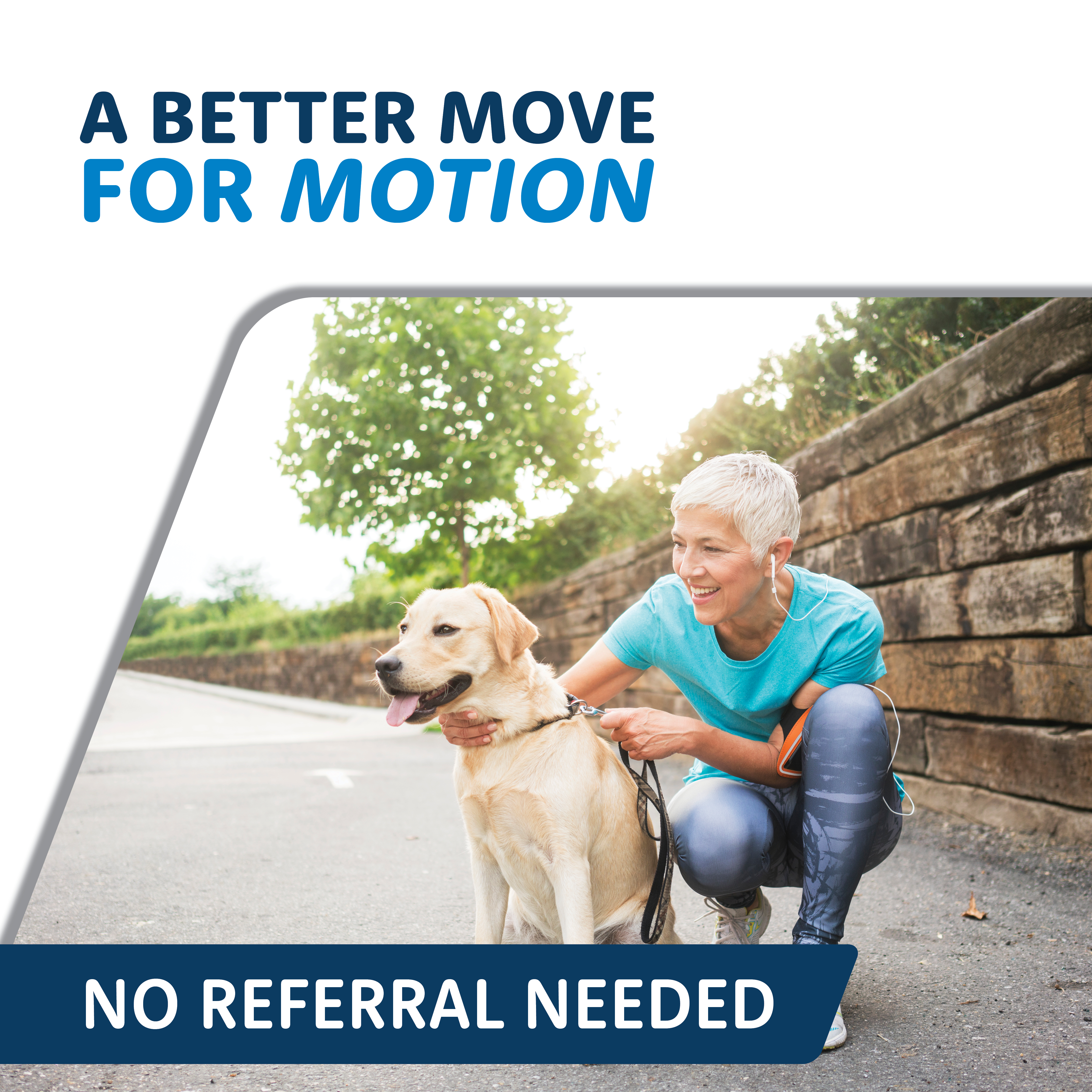
Experienced Expert Surgeons and Team
Setting the standard in orthopaedic care, our team is the best in the region and are dedicated to working with each individual patient - getting them back to a full range of living. Everyone in our offices work together. Surgeons, physician assistants, our therapy teams, athletic trainers, and staff strive to create the best possible experience and outcomes for each and every patient.
On-Site Physical and Occupational Therapy
Our compassionate physical and occupational therapists work alongside our surgeons to provide a team approach to patient care - allowing us to provide customized treatments plans and get you back to normal tasks and hobbies faster. Our therapists have extensive education in the areas of orthopedics, manual therapy, sports rehab, and injury prevention - all cultivating the best possible recovery.
Locations Across the Region
We are proud to offer a wide range of orthopaedic care, physical and occupational therapy, and on-site MRI and X-ray imaging services at our main office in Duluth. However, we also offer various locations throughout the area for the convenience of our patients.
We have a clinic in Hibbing, MN and a therapy clinic in Hermantown, as well as the ability to offer surgical procedures at facilities in Duluth, Grand Rapids, Moose Lake, Hibbing, Grand Rapids, International Falls, and Grantsburg, WI.
With many visits not requiring surgery, our physicians are also able to regularly see patients at outreach clinics throughout the region including Virginia, Mt. Iron, Two Harbors, Sandstone, and Ely. Offering hometown care is important to us, because we know it is important to those we help every day.
By providing these opportunities for your healthcare, Orthopaedic Associate allows you to take the lead on making decisions for those you love and care about most - so that you can continue to make memories, stay active, and continue your passions. If you are ready to make a better move for motion, schedule an appointment!
Preparing for a Successful Race Season
August 10, 2022
The snow is gone and we can finally see dry(ish) ground on our roads, sidewalks, and trails. This means one thing for many Duluth athletes - it’s race season!
While many may have already been braving the cold and slush for the love of their sport, most Midwesterners are getting ready to finally bust out the new shoes and hit the pavement to start training for upcoming 5ks, marathons, bike races, and other competitions scheduled for the season.
Feeling prepared is the number one concern for most athletes, so we have gathered a few tips to follow to help you put your best foot forward in any upcoming race you’ve signed up for.
Set up a Routine
To enter a race confidently, a consistent training plan is key. This doesn’t mean pushing yourself to the max every day. Instead, create a plan that fits your goals and will benefit your body and mind to perform to the best of your ability come race day.
There are a plethora of resources and training schedules online designed for everyone from beginners to intermediate athletes. Amongst these, you can find a plan that matches the time frame you have until your race, allowing you to steadily and healthily build up your speed and progression to meet your goals. If you work better with a trainer, many local gyms also offer training sessions, schedules, and strategies to help you succeed. Work better in a group (we highly recommend this option!)? Find a local running, biking, or workout group to join - keeping you accountable and motivated along your training journey.
Switch it up for Well-Rounded Training
Most (if not all) good training routines incorporate a multitude of different types of exercises for the entire body. We all know that come race day you will want to be at the top of your aerobic capacity (how well your lungs and heart can get oxygen to your muscles). Building up this endurance and exercise tolerance takes time and patience as you gradually and continually increase your speed and duration of activity.
However, aerobic and cardiovascular capacity is not the only thing to think about when training. Strength training is highly beneficial in order to see progress and to avoid pain. It keeps your body aligned and functioning the way it is supposed to. When it comes to strength training, you may think you can skip your lower body since you are using your legs in other workouts, however this is not the case. Lower body is just as important to focus on as upper body or core strength to limit unalignment and injury.
While you are incorporating additional body movements into your routine, let’s add dynamic stretches into the mix. Flexibility and mobility exercises are a perfect way to maintain, and even strengthen, the health of your muscles, joints, and tendons. These are great to do at the beginning or end of your workout to warm up or cool down your body. We recommend lunges with rotations as well as other lower body focused stretches to prepare your legs for a long jog or brisk sprint.
Warm Up and Cool Down
This is a good place to speak about the importance of warming up and cooling down while training.
Warming up before a workout helps to gradually increase the body’s temperature and blood flow to your muscles, preparing them for exercise and reducing the risk of unnecessary stress or injury. Start by practicing some dynamic movements to elongate muscles and increase joint range of motion, as well as beginning any activity slowly and gradually building up your pace or intensity. In addition to improving performance, warming up also benefits mental preparation by allowing your brain to become more focused on your body and the activity it is about to perform. This focus can improve coordination and technique.
Cooling down allows your body to transition from exercising to a state of rest by gradually reducing your body temperature, heart rate, and breathing. It also helps prevent muscle soreness. Think of this as your warm up, but backwards. Begin to ease down, tapering off to a slow jog or walking pace. Also incorporate static stretches, holding each stretch in a challenging, but not painful position for 15-60 seconds.
Invest in Proper Footwear
Training puts many many miles on your feet, so you want to make sure they are taken care of with the right fitting footwear. Find a quality pair of shoes that fit properly, are supportive, absorb force, and have good ankle support. It is also important to make sure they feel comfortable for your foot type and will not cause blisters. Tip: there are a few athletic shoe retailers in the Duluth area that are happy to help make sure you are purchasing the correct shoe for the build of your foot. We suggest checking out Austin Jarrow, Duluth Running Company, or Tortoise and Hare Footware. Not only will a good pair of shoes help your feet, but they will also benefit your hips and back in avoiding pain and injury.
Ensure you are running correctly
You learned to walk as a young child, so you should be able to know how to run, right? Not always. We often form bad habits or are not optimizing good form. Orthopaedic Associates of Duluth offers complete comprehensive running evaluations, which include a formal physical therapy evaluation and a running form assessment. Assessments are designed to analyze a runner's performance in order to help provide and create personalized running plans - helping you more efficiently and effectively reach your goals.
Maintain a Healthy Diet
In order to keep up with a training routine, it is important to refuel your body appropriately. Eat about 40-60g of carbohydrates per hour during training and replenishing with at least 25g of protein and carbs after. It can also be beneficial to cut back on alcohol consumption and processed sugars, keeping in mind to increase whole fresh foods. Staying hydrated is also important before, after, and during training sessions.
Know When to Seek Help
If you are experiencing lasting pain while training, reach out to your healthcare provider or a specialized member of our team and schedule an appointment to ensure you are not straining any muscles, joints, or other parts of your body to injury or serious damage. We can also help figure out a treatment or supplemented workout plan to get you back on track with your goals, or if needed, new goals. Contact our team at (218) 722-5513 or fill out the contact form at https://oaduluth.com/contact.php with any questions, concerns, or to set up an appointment.
By following these tips and recommendations, you will be geared up and ready for a confident, injury-free, and successful race season! We are cheering for you every step of the way
Supporting our Neighbors through the Chester Bowl Improvement Club
February 8, 2022
Here at Orthopaedic Associates of Duluth we are committed to helping the members within our communities live in motion, not only after an injury but within their daily, healthy lives as well.
We are proud to offer various classes that teach how to be active in ways that will not hurt your body, take part in community events to get to know our neighbors, and by being able to provide support to causes we stand behind.
One of these causes we are passionate about and want to share with you is Growing up Chester.
Growing up Chester is a nonprofit organization that works to promote sustainable, quality programs for all users of Duluth’s Chester Bowl Park, in a healthy, positive and safe environment. Chester Bowl keeps our communities active by providing winter ski and snowboard programs, as well as summer day camps at affordable rates. Believing that anyone interested in skiing or snowboarding should be able to regardless of income, Chester Bowl awards scholarships, free lessons, and inexpensive concessions year after year.
.jpg)
.jpg)
This year, we were thrilled to contribute a $30,000 donation during Chester Bowl’s 2022 inaugural race held on Sunday, February 6. During this event, sponsored by the Kiwanis Club of Friendly Duluth, 93 skiers and snowboarders aged 3 to 16 took to the slopes. This year was especially inspirational for young athletes with the start of the Winter Olympics - many envisioning themselves getting to the medal podium in future years.
We were so pleased to be able to help and to have presented this gift during such a meaningful event, with the hope of continuation of development and expansion of programs and infrastructure - impacting families within our community for years to come.
Currently, the Chester Bowl Improvement Club is working towards expanding and updating the chalet, making it more ADA accessible and user friendly, as well as upgrading the HVAC facilities in order to make it a better year-round facility.

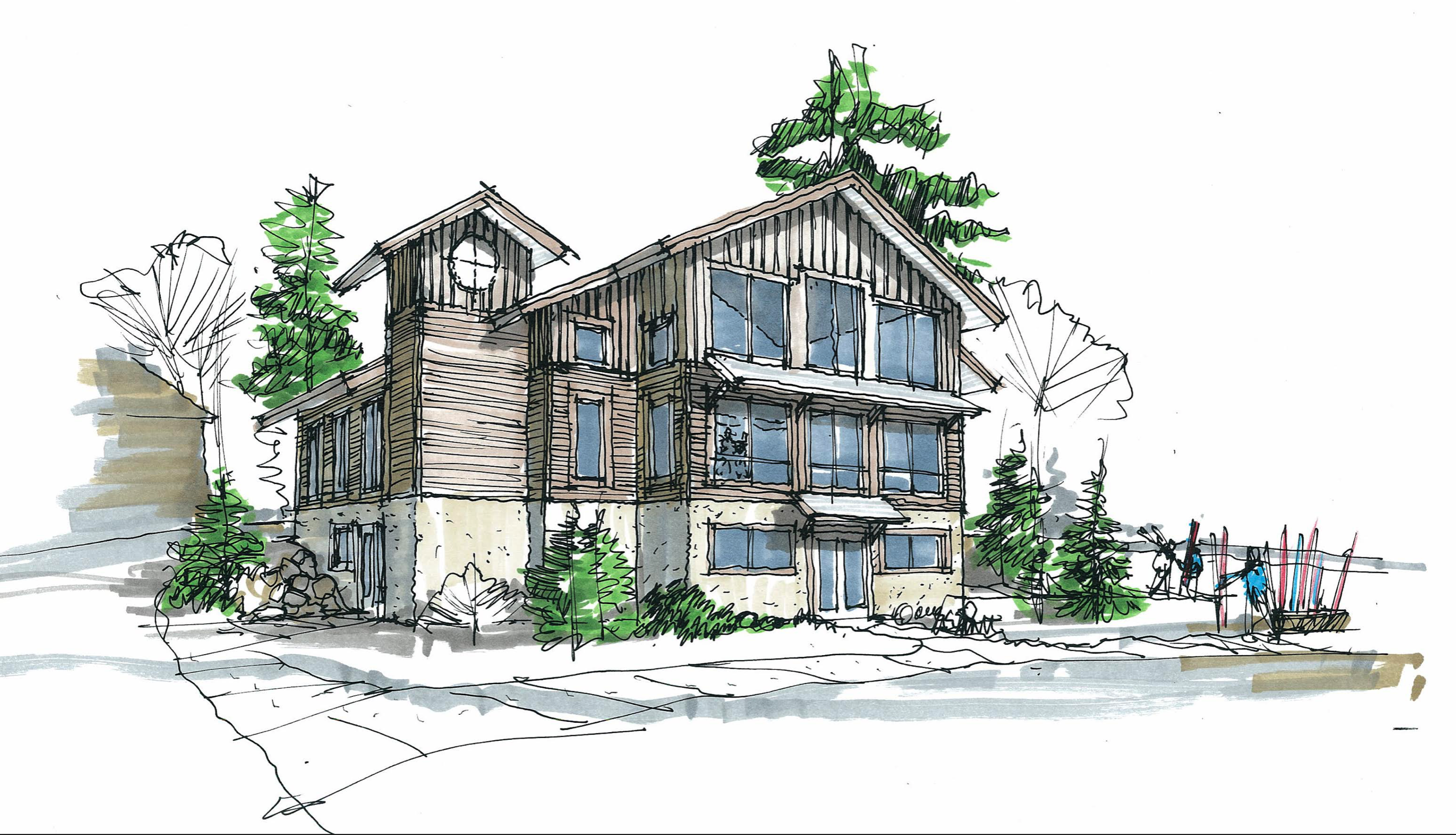
Many of our own doctors and staff have grown up or raised families in the Duluth area, and more specifically have spent time at Chester Bowl. We understand the huge role the park plays on the lives of those who live here. It is a great space for the community to move outdoors - making memories, learning new things, and staying active and healthy in ways they enjoy.
.jpg)
.jpg)
Avoid Winter-Related Injuries this Season
January 18, 2022
Living here in the Northland, we can typically expect to enjoy winter conditions six to seven months out of our year. While we pride ourselves on being hardy and able to navigate our day to day life through the cold, snow, and ice - it is also important to make sure we are aware of potential injuries and take caution where we can.
Watching out for ice and slippery walkways during the colder months may seem like common knowledge, however they lead to some of the most common winter injuries, bumps, and bruises, and even fractures.
Ice can be difficult to see at times, and can often be mistaken for pooled water or wet pavement. Take extra care and always watch your footing when pathways are not cleared or dry. Make sure the sidewalks, walkways, and driveway to your home are shoveled and clear of ice after each snow. You can also use de-icer or sand for the stubborn ice spots. This may be a tedious task, but ensures comfort and safety for you, your family, and visitors in the long run.
Make sure to take your time and don’t strain yourself while shoveling or removing snow for risk of causing injury, while working to prevent injury. The repeated twisting and lifting of heavy snow can take a toll on the body, causing pulled or tightened muscles, fractures, and more. Use the correct shovel and lifting techniques to keep your body in line and avoid pain. If you are starting to feel sore or tired, take a break to stretch your muscles. The same tips go for removing snow and ice from your vehicle. Warm up your vehicle ahead of time, watch your footing, don’t overreach, and not rushing will make removal easier and reduce injury.
When ice or snow does cause a fall, assess the situation and pain to determine the severity. Some falls can be minor, simply resulting in a bruise and slight soreness after the incident. Other injuries can be more intense, including broken or fractured wrists or hips from catching oneself, ankle twists and sprains, muscle strains, and back, spinal cord, or brain injuries.
While anyone can suffer an injury caused by snow or ice, seniors and people who have previously had an injury are more at risk.
Prevention and preparedness are the best methods to avoid slips and falls on winter days. There are quite a few actions you can take to limit the potential for accidents.
- Wear proper footwear for the conditions. You can also invest in Yaktrax or other traction cleat products used to grip and ease walking on ice.
- Use a walking pole or stick to help with balance.
- Avoid long steps, keeping your stride short and slow.
We emphasize the importance of removing snow build-up on walkways, however all that snow can be moved to one of our favorite winter activities - the sledding hill! Winter has some of the best seasonal activities and seeing how fast you can get down a hill on a sled is one of the best ways to bring out the child in all of us!
That being said, safety measures should be taken during this wintertime adventure to ensure the hill stays fun! Did you know that 25,000 children are treated for sledding injuries in the United States each year? Head, neck, and abdominal injuries are the most common.
There are many easy precautions to take when sledding.
- Wear a helmet. Ski helmets are ideal, but hockey or bike helmets also help.
- Make sure your sled is high quality and in good condition.
- Use sleds correctly, never go head-first and follow weight/passenger guidelines.
- Make sure the hill is safe - away from roads, frozen bodies of water, and clear of obstacles.
- Have sledders walk up a side of the hill instead of the middle and always be aware of their surroundings.
Following these tips will reduce solo crashes as well as running into other people or objects. Also, always remember to wear proper outerwear to stay warm and free of frostbite while outside.
For tips on avoiding winter sports-related injuries, check out our blog post from last winter here.
Although some winter injuries may seem small or unnoticed at first, monitor how you are feeling after a fall or unpleasant incident in case issues arise later on. Injuries can range from mild to severe, for the more severe or pain that is not subsiding, reach out to our team for an appointment. Stay warm and safe this winter season!

